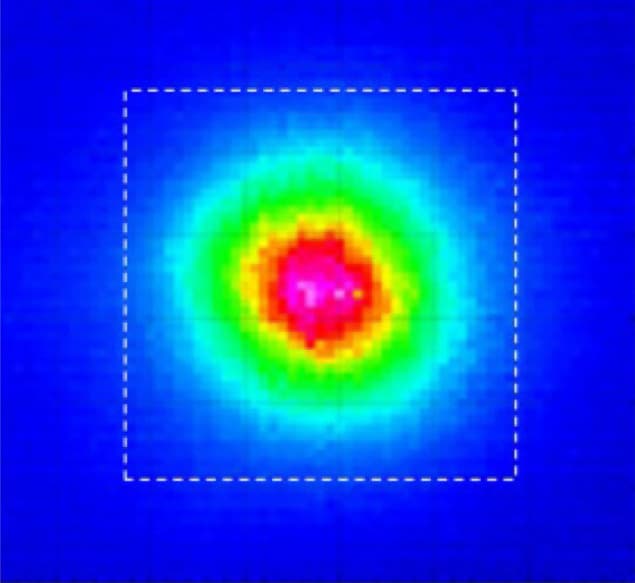
Short yet powerful bursts of terahertz radiation can damage DNA and also increase the production of proteins that help the cells to repair this damage. That is the conclusion of physicists and biologists in Canada, who have studied how the electromagnetic radiation interacts with human skin cells. The discovery could lead to the development of new medical therapies that make use of terahertz radiation.
Electromagnetic radiation in the terahertz frequency range – usually defined as 0.3–3 × 1012 Hz – shows great promise for security and medical-imaging applications. This is because it can pass through clothing and penetrate skin but is not ionizing like X-rays. As a result, low-intensity terahertz pulses are believed to be harmless to living organisms.
Vibrational modes
However, biophysicists have known for some time that double-stranded DNA has vibrational modes at terahertz frequencies. “In fact, these modes play an important role in local helix melting, or the separation of base pairs, which is necessary for the biological process of transcription to occur,” explains Lyubov Titova of the University of Alberta, who did this latest research with colleagues there and at the University of Lethbridge. Recent theoretical work suggests that externally applied terahertz radiation can couple to these modes and amplify them. Now, Titova and colleagues have found evidence that intense, picosecond-duration pulses of terahertz radiation can actually cause DNA strands to break in human skin cells.
The team created terahertz pulses by firing infrared laser pulses at a non-linear lithium–niobate crystal. The resulting pulses last about a picosecond and peaked at a frequency of 0.5 THz with a bandwidth of 0.1–2 THz. Each terahertz pulse has an energy of about 0.1–1.0 µJ, which is at least 10 million times greater than the energy of the terahertz pulses used in medical-imaging applications.
Damage and repair
The pulses were fired at samples of artificial human skin tissue that are able to undergo cell division and are metabolically active. DNA damage was detected by looking for a chemical marker called phosphorylated histone H2AX, which is formed when DNA strands are broken. This marker was seen in skin samples exposed to the terahertz pulses, along with increases in the levels of multiple-tumour suppressor and cell-cycle regulatory proteins that are involved in DNA repair. These observations could mean that damage done by the picosecond terahertz pulses is quickly and efficiently repaired – minimizing the risk of cancer being caused.
The study did not consider the effects of long-term exposure to such pulses – the skin samples were analysed 30 minutes after exposure. The team now plans to study how the effects change over time after exposure. “[This] should allow us to establish how quickly any induced damage is repaired,” explains Titova.
Potential medical applications
The team also plans to look at the potential therapeutic uses of intense terahertz pulses – with the hope that such pulses could become a new tool in the fight against cancer. “Any agent that causes DNA damage has potential applications in cancer therapy,” explains Titova. The team is now planning to study how intense terahertz pulses impact cancerous cells.
In addition to understanding the biological effects of the pulses, compact and inexpensive sources of intense pulsed terahertz radiation would have to be developed for use in hospitals. While such systems are currently not available, Titova says that terahertz technology is “developing by leaps and bounds, and such sources will probably be available in the near future”.
The research is described in Biomedical Optics Express.



